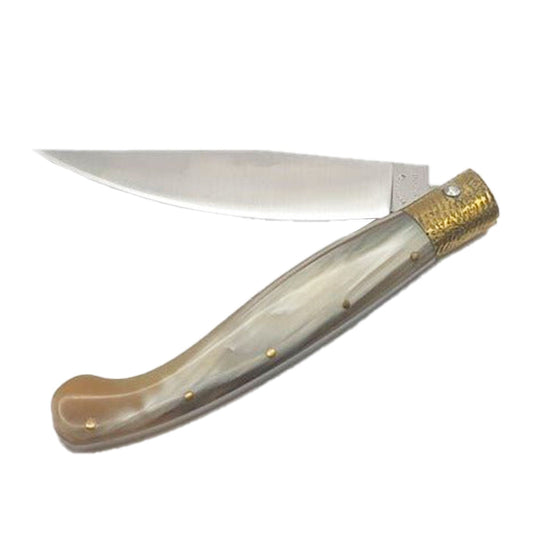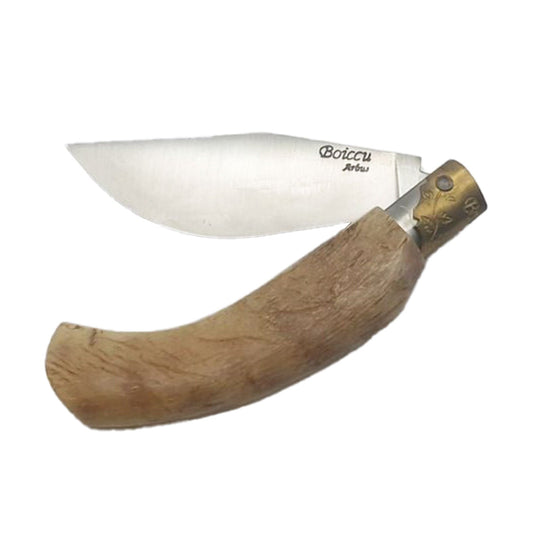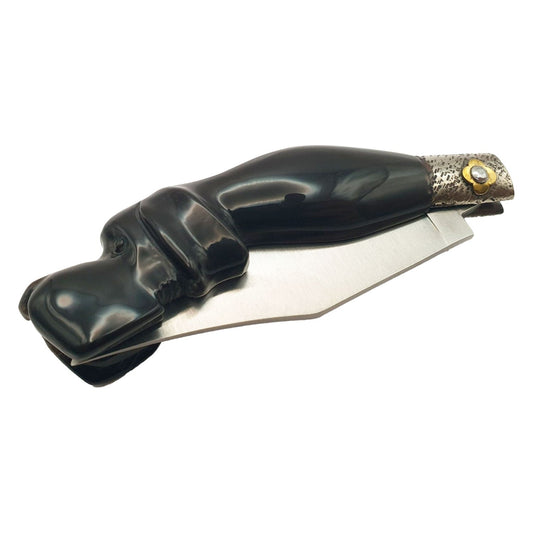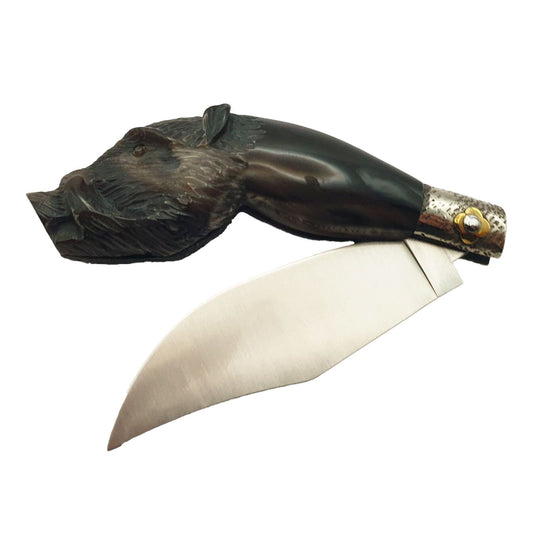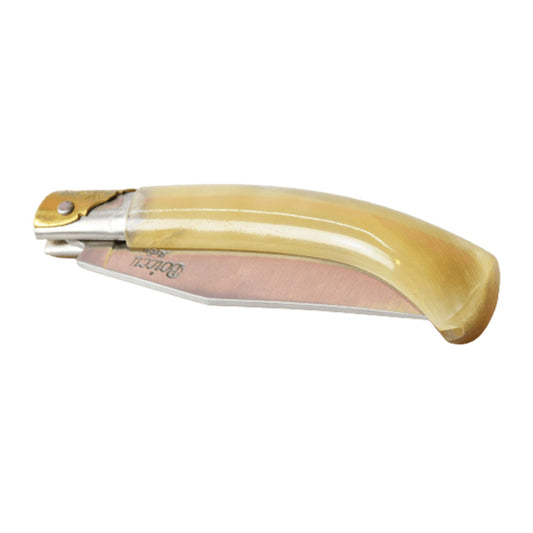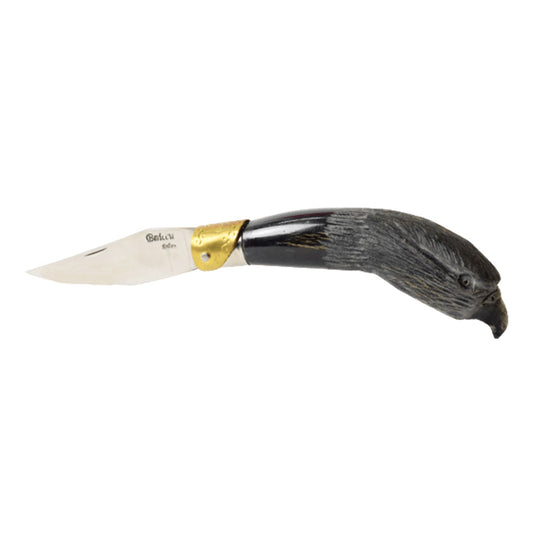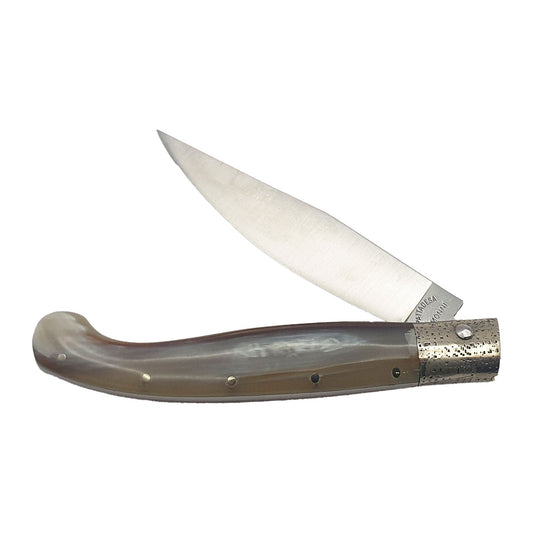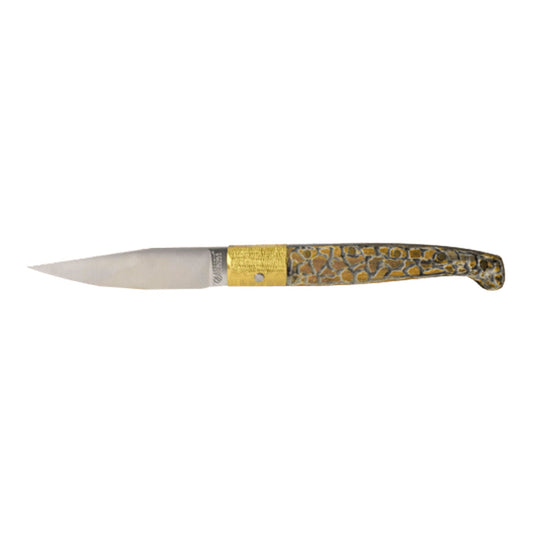Collection of handcrafted Sardinian knives, forged by hand with passion: each knife holds a fragment of Sardinia, embodying tradition, identity, and timeless beauty.
Sardinian Knives
-
Pattadese-style knife, juniper handle, 10 cm blade
Regular price €119,00 EURRegular priceUnit price / per -
Pattadese, polished light bovine horn handle, 23 cm in length
Regular price €135,00 EURRegular priceUnit price / per -
Arburesa Knife Model "gennamari", bovine handle, 8 cm blade
Regular price €99,00 EURRegular priceUnit price / per -
Arburesa knife with double collar, 9 cm blade.
Regular price €136,00 EURRegular priceUnit price / per -
Sculpture Knife Dog, Buffalo Handle, 23 cm
Regular price €270,00 EURRegular priceUnit price / per -
Boar Sculpture Knife, Buffalo Handle, 23 cm
Regular price €270,00 EURRegular priceUnit price / per -
Arburese knife, double bolster, 9 cm blade, Original Knife Made in Sardinia (Italy).
Regular price €90,00 EURRegular priceUnit price / per -
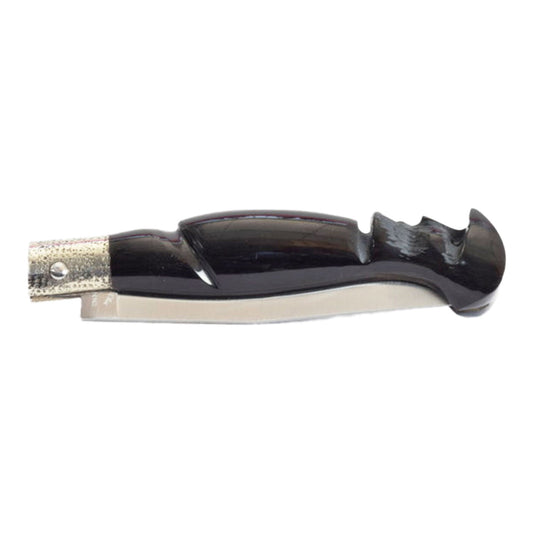 Sold out
Sold outPastor Sculpture Knife
Regular price €190,00 EURRegular priceUnit price / per -
Sculpture Knife Eagle, Arburese Model
Regular price €195,00 EURRegular priceUnit price / per -
Pattadese, Juniper Handle, 8 cm Blade
Regular price €99,00 EURRegular priceUnit price / per -
Pattadese, dark shiny bovine horn handle, length 23 cm
Regular price €135,00 EURRegular priceUnit price / per -
Deroma Cutlery, original Pattada, brown sheep horn handle with engraving.
Regular price €520,00 EURRegular priceUnit price / per
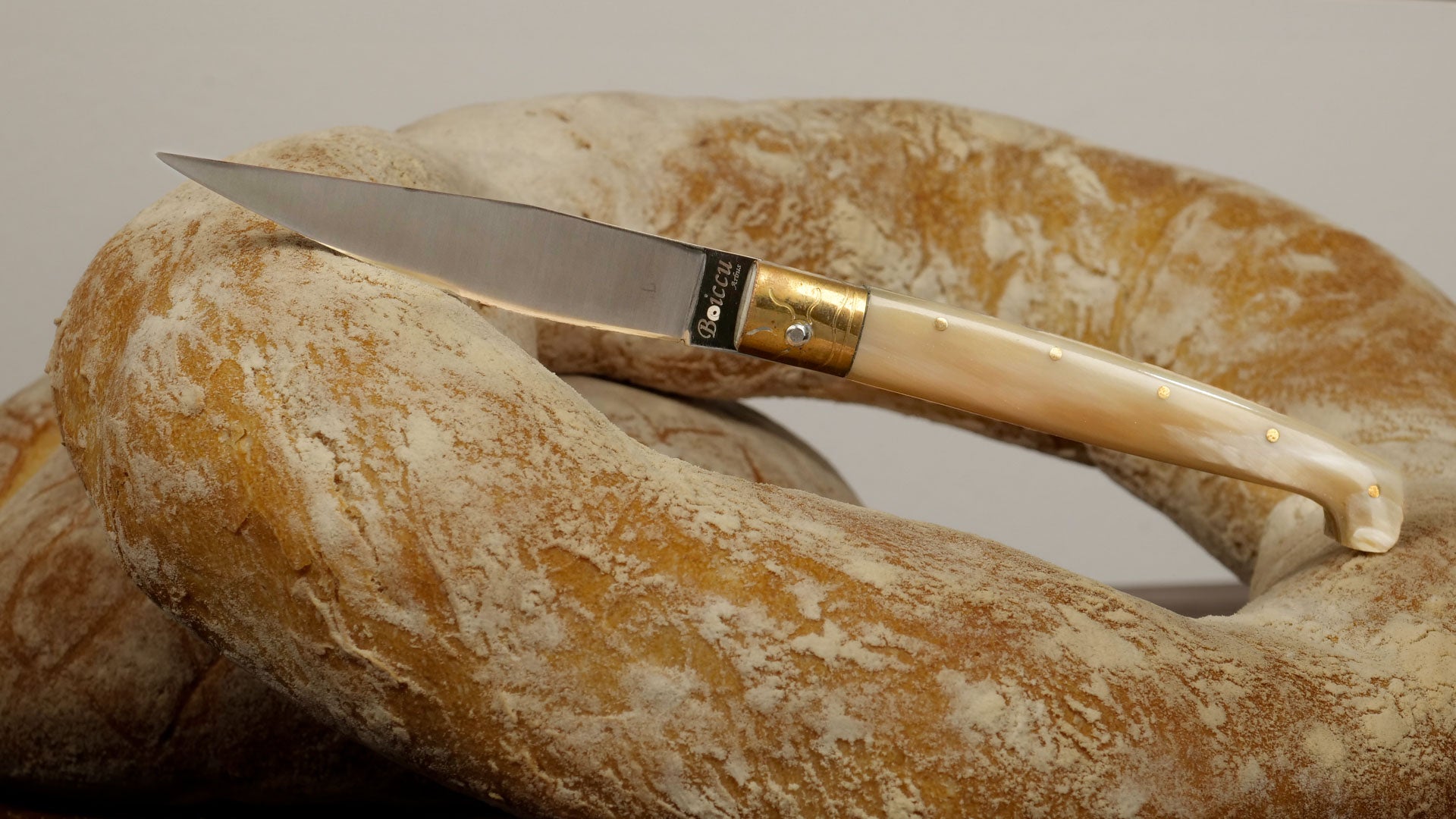
Sardinian Knives
For centuries an indispensable aid in the toils of the fields, the history of the Island is condensed in Sardinian knives. Special uses and customs have developed around the knife, linked both to its primary function as a blade and to its symbolic meaning within a rural society that was often harsh and spartan.
What does it mean to give a knife as a gift in Sardinia?
-
Even today, a knife is considered a precious gift, symbolizing esteem and respect. However, according to tradition, the recipient cannot accept it without offering a symbolic amount of money in return. This gesture is believed to free the giver from the feeling of having gifted an object that, in the wrong hands, could bring sorrow or misfortune. The sharp blade can also symbolize a severed bond between two people, which is why it’s customary to “repay” the knife you receive. Another unwritten rule says that the knife should always be offered open, held on the palm of the hand facing upward — a gesture of trust and assurance that it will never be used with ill intent.
-
The revolution of the Sardinian knife.
In the mid-1950s, when technology transformed several sectors of Sardinia’s economy — from shepherding to agriculture — the knife evolved in its role within daily life. It went from being an all-purpose tool to a decorative item, and eventually, to a true collector’s piece.
Just like the regions they come from, Sardinian blades vary greatly: from the resolza of Pattada (in northern Sardinia), to the arresoja of Arbus-Guspini (in the south), and the lurisinca of Gallura — all knives that embody strength, elegance, and remarkable durability.
Sardinia is home to around a thousand knife makers, with the most renowned artisans receiving orders from all over the world — often with waiting lists lasting months. The value of each piece can vary depending on the craftsman’s reputation and the materials used, such as gold, silver, or brass.
Handcrafted Sardinian Knives
-
The geography of the Sardinian knife.
An ideal journey through the history of Sardinian knives begins with the resolza, originally from Pattada — a blade that embodies the story of Sardinia’s agro-pastoral world. It is a folding knife, featuring a handle made from two strips of male goat horn, firmly joined by small rivets that secure s’arcu, the metal arch that gives the handle its distinctive strength.Also known as pattadesa, it was an essential item in every shepherd’s bag — they often owned two or three, each for a specific use: for making cheese, butchering livestock, and other daily tasks.
The còrrina, considered by some the ancestor of the pattadesa, is a more rustic knife with a fixed olive-leaf-shaped blade inserted into a ram’s or goat’s horn. The blade was often sheathed in a piece of cork to prevent injuries when carried in a pocket.
Another knife belonging to the resolza pattadesa family is the lussurzesa, a folding knife from Santu Lussurgiu (in the province of Oristano).
-
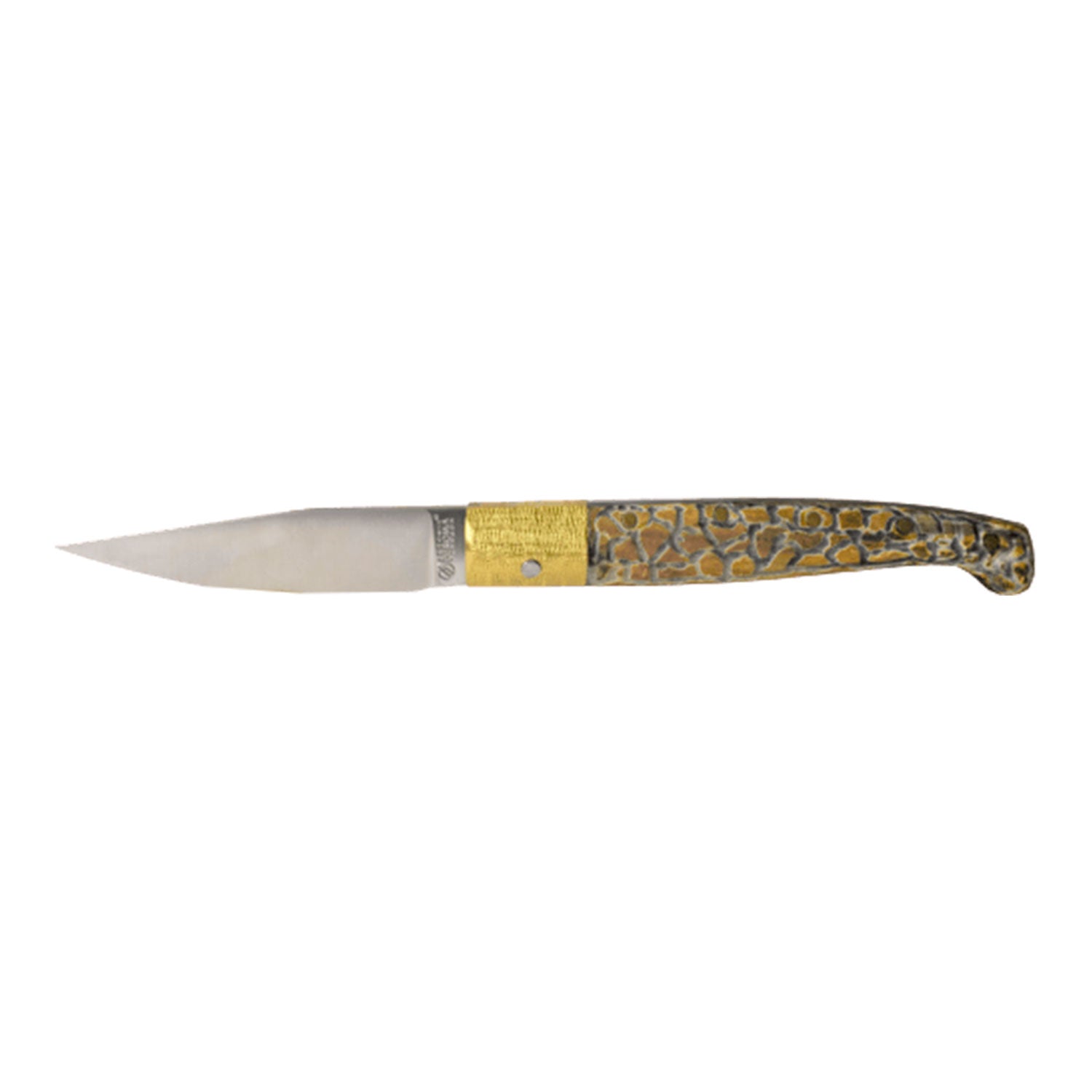
Coltello Sardo
-
Muovendosi verso i boschi di sughere della Gallura, possiamo trovare la lametta gallurese detta lurisinca, ossia “donna di Luras” (un paese vicino a Tempio Pausania). La si usava per la lavorazione del sughero: ha la punta tronca e il manico leggero realizzato in legno di fico. La lama è affilata solo da un lato, e quando si consumava, veniva riciclata e utilizzata per fare altri coltelli, soprattutto da cucina.
Spostandosi verso il Sud Ovest dell’isola, fra Cagliari e Oristano arriviamo nel mondo delle miniere.
-

Sardinian Craftsmanship Knives
Just a few kilometers away, we find Guspini, the kingdom of the guspinesa, the miners' knife. There are two models, both with folding blades: one with a curved blade (myrtle leaf shape) and a curved handle; the other with a spatula blade, a blunt blade, and a squared handle profile.
The latter model was designed to circumvent a 1908 decree, in which Prime Minister Giovanni Giolitti banned carrying pointed knives with blades longer than four
centimeters, in an effort to reduce the frequent violent incidents in the region at that time.


